Engine Repair: How We Do It At EME Aero?
An aircraft engine service is a complex process that requires involvement of many different specialists. At EME Aero, it usually consists of five cycles. Each one is inextricably connected to each other. If you want to know how aircraft engine service looks in our company, read on.
Engine Repair In 5 Steps
Step 1. Engine Induction and Engine induction Inspection
Step one, which we internally call Cycle 0, begins when the engine is removed from the wing and delivered to us. The Logistics Department is responsible for its physical and systemic induction .
This is the moment when the Engineering Department prepares system orders to perform the work ordered, and then forwards this information further. To the Production Planning Department. At this stage, our specialists have already developed a detailed schedule of work on the engine.
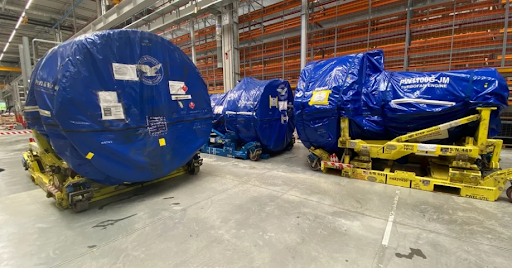
The proper engine service begins when it goes to the shop floor. There, the Disassembly Department prepares it for further work. We then carry out a visual (boroscope) inspection and assess its general condition.
Step 2. Engine Disassembly and Parts Inspection
The next step, Cycle 1, begins with the engine disassembly process, where the engine is disassembled into its individual modules. They are then inspected. For this, the Quality and Certification Department conducts a visual inspection and prepares an initial inspection report.
If the modules require further disassembly, mechanics from the Disassembly Department hand over the dismantled parts to the Cleaning, Inspection and Repair Team. They, in turn, assess their condition according to the quality guidelines.
If the inspection is not possible, our specialists clean individual elements in accordance with the order and technology. Then, they subject them to non-destructive testing. This stage ends with a series of tests carried out by using computer measuring devices and advanced FPI, MPI, US and EC procedures.
At the end of Cycle 1, the Quality and Certification Department checks the correctness and compliance of the work performed. And Cycle 1 ends with Inspection Status on all parts.
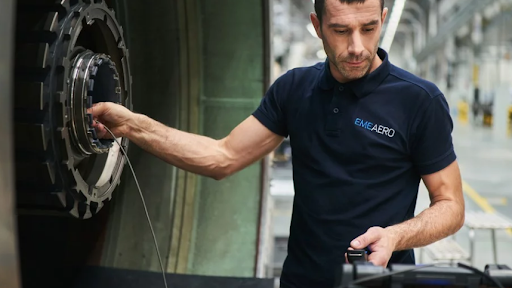
Step 3. Supply of Materials and Internal Repairs
The next step, Cycle 2, starts with the Engineering Department registering all components in the system and confirms which of them should be assembled If there is a change in technology or components while the engine is waiting for assembly, the EME Aero Customer Support department discusses the scope of changes with the client in detail. Only after its approval, the changes are implemented.
Cycle 2 is also waiting for the return of previously sent parts for repair and newly ordered components. In this place, it is worth noting that the network of our suppliers is located all over the world. The Purchasing Department and the Material Planning Department are responsible for the access to the materials required for assembly.
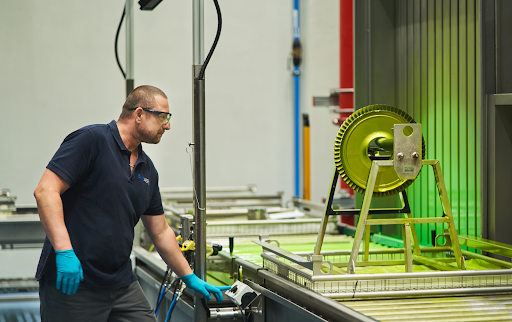
Not all repairs are performed outside our company. Some of them are carried out at the EME Aero workshop. The scope of internal repairs is gradually growing, increasing flexibility in terms of parts availability.
At the end, Cycle 2 completes the preparation of components for assembly.
Step 4. Engine Assembly and Test
The next step is Cycle 3. In it, after completing all parts in Cycle 2, the Logistics Department prepares them for assembly on the engine. This step confirms that the parts comply with the specification of the given engine and the order, and their condition allows for safe operation.
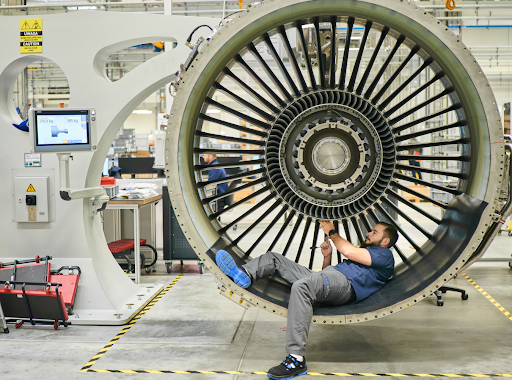
Then, depending on the scope of disassembly, the assembly takes place. This time we start with individual parts, then go through the modules, and end up assembling the entire engine.
During this stage, the Assembly Department goes through complicated special processes, cooperating with the Quality and Certification Department. All of this to continuously verify the highest quality of the process.
And so, after qualitative acceptance of the assembled engine, it goes to the test cell . EME Aero is equipped with one of the most modern engine test cell in Europe.
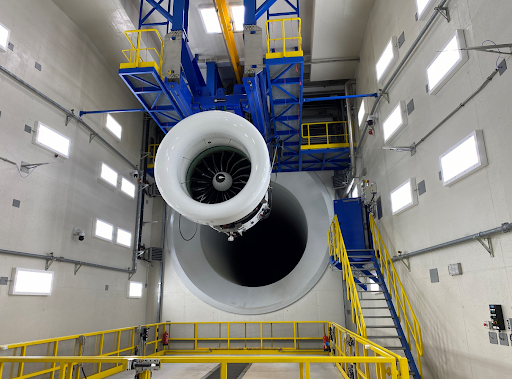
This is an extremely important stage. During it, we recreate the working conditions of the engine on the aircraft wing. Dozens of sensors then acquire the data necessary to determine the performance characteristics of the engine. Only after a thorough analysis of these results, we can confirm their correctness. Then, the Quality and Certification Department issues airworthiness approval documents and the engine is ready for transport.
Step 5. Shipping and Summary of the Visit
Finally, step 5, that is Cycle 4. This is a summary and settlement of the entire visit. At this stage, the Technical Documentation Department prepares the documents that confirm service implementation. Moreover, our specialists summarize the amount of materials used and the time we spent on the execution. Finally, the engine goes to the customer.
Read more about the service cycle in our company here.
Aircraft engine repair is a very responsible job. It depends on its success whether the plane will be able to rise into the air, carrying people on board. That is why at EME Aero we engage so many different specialists in this process. We want to be sure that the engine released for use is not only effective, but above all ensures safety during the flight.
Do you find our article interesting? Perhaps you should consider working in aviation. At EME Aero, we regularly recruit for various positions. Check out our current job offers.

